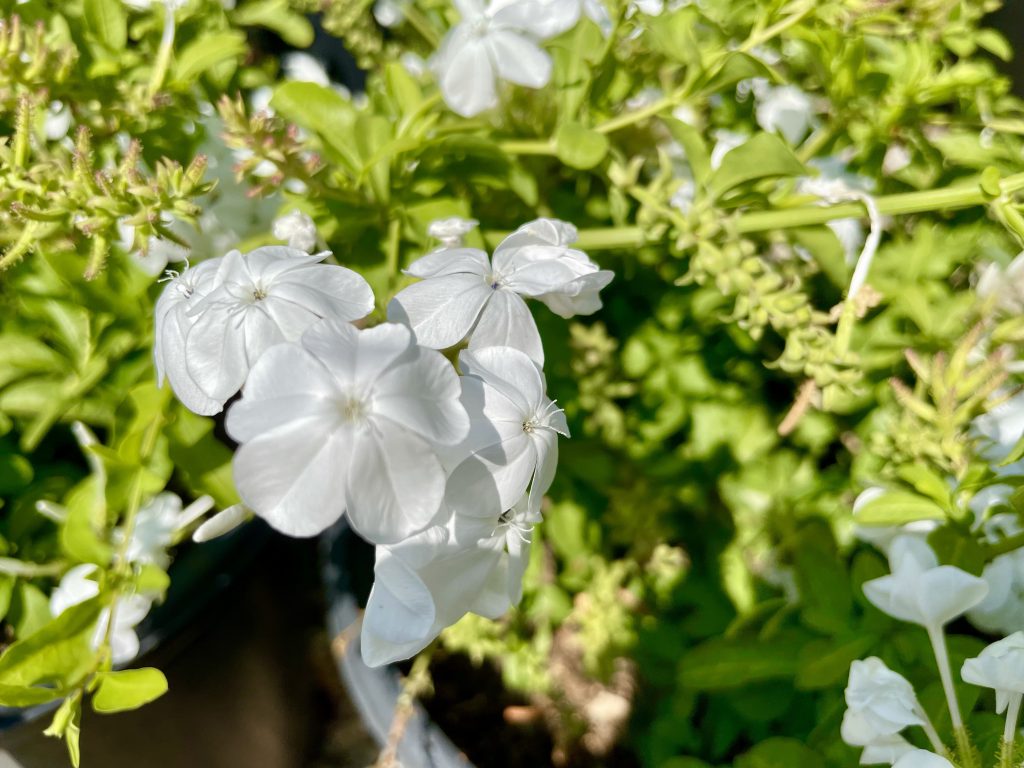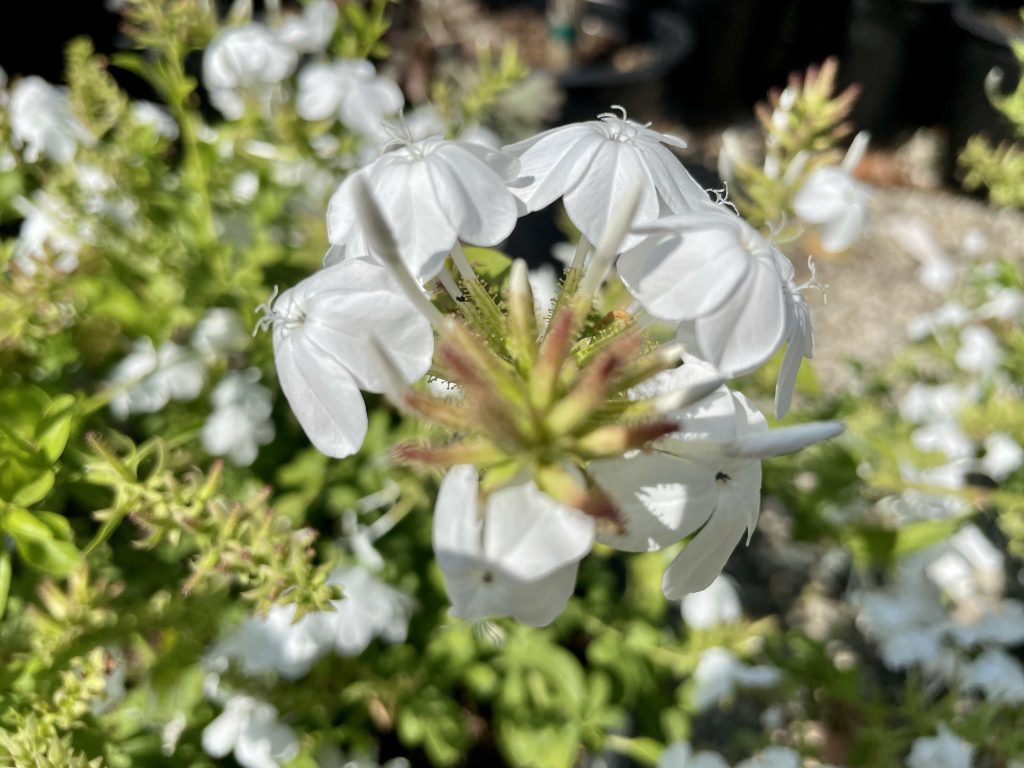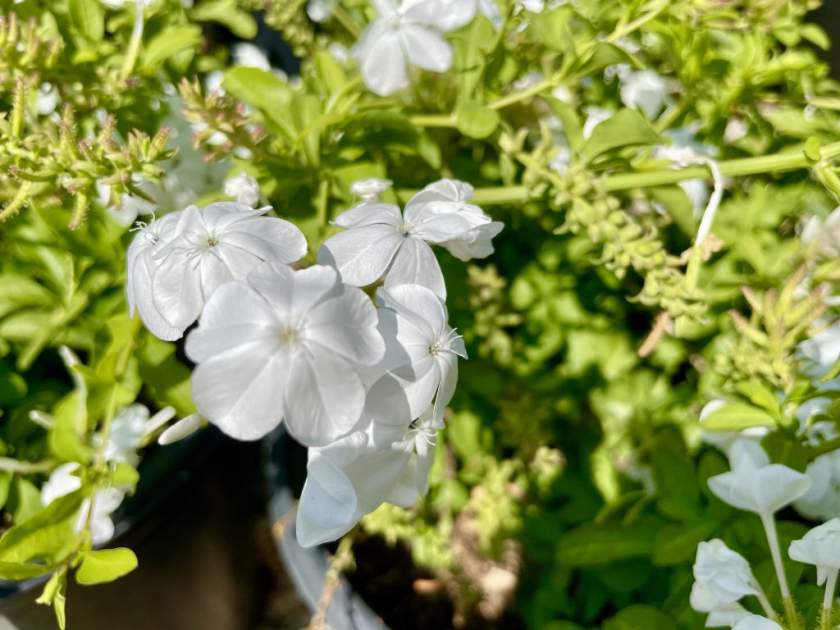Plumbago auriculata f. alba is a sprawling evergreen shrub from the Plumbaginaceae family of plants. They also call it the Plumbago auriculata ‘Alba’, White Cape Leadwort, White Cape Plumbago, Plumbago capensis alba, Plumbago capensis ‘Alba’, or White Plumbago du Cap. It is native to South Africa.

The name auriculata is referring to the shape of leaves as they seem to have ears, and it means with ears. Plumbago auriculata f. alba grows to about 1.8m or 6ft tall. It has tender stems with spoon-shaped, green leaves. The flowers are white, trumpet-shaped, and five-lobed. They grow on short racemes. Plumbago auriculata f. alba flower profusely from spring into summer. In milder climates, it could flower much longer if not all year.
How to grow Plumbago auriculata f. alba:
Sun and Shade: Plumbago auriculata f. alba thrives in full sun to partial shade. It requires at least 6 hours of direct sunlight per day to produce abundant blooms. However, it can tolerate some shade, especially in hot climates where it helps protect the plant from intense afternoon sun.
Wind Protection: It is advisable to provide some protection from strong winds as Plumbago auriculata f. alba has delicate branches that can be susceptible to breakage. Consider planting it in a location sheltered by buildings, fences, or other windbreaks.
Soil Requirements: This plant prefers rich, fertile soil that is well-drained. Although it can tolerate a variety of soil types, ensuring good drainage is essential to prevent root rot. Slightly acidic soil with a pH level between 6.0 and 7.0 is ideal for optimal growth.
Watering: Plumbago auriculata f. alba is moderately drought-tolerant once established. During the growing season, provide regular watering to keep the soil consistently moist but not waterlogged. Avoid overwatering, as it can lead to root rot and other fungal diseases.
Disease and Pest Management: This variety of Plumbago is generally disease-free. However, it may occasionally attract common pests such as mealybugs, whiteflies, and spider mites, especially when grown indoors. Regularly inspect the plant for any signs of infestation and take appropriate measures, such as using organic pest control methods or applying insecticidal soap if necessary.
Propagation: Plumbago auriculata f. alba can be propagated through seeds or semi-hardwood cuttings. Collect seeds from mature flowers and sow them in a well-draining seed-starting mix. For cuttings, select healthy stems and place them in a rooting hormone before planting them in a suitable rooting medium.
Pruning: To encourage bushier growth and maintain a compact shape, prune the branches of Plumbago auriculata f. alba by cutting them back to a few buds. This can be done in late winter or early spring before new growth emerges.
Heat Tolerance and Deer Resistance: Plumbago auriculata f. alba is known for its heat tolerance, making it suitable for warm climates. Additionally, it is deer resistant, meaning it is less likely to be damaged by browsing deer.
Attracting Pollinators: The white flowers of Plumbago auriculata f. alba attract butterflies and bees, making it a welcome addition to pollinator-friendly gardens.
By following these guidelines, you can successfully grow and enjoy the beauty of Plumbago auriculata f. alba, with its white blooms and lush green foliage, adding elegance and charm to your garden or landscape.





